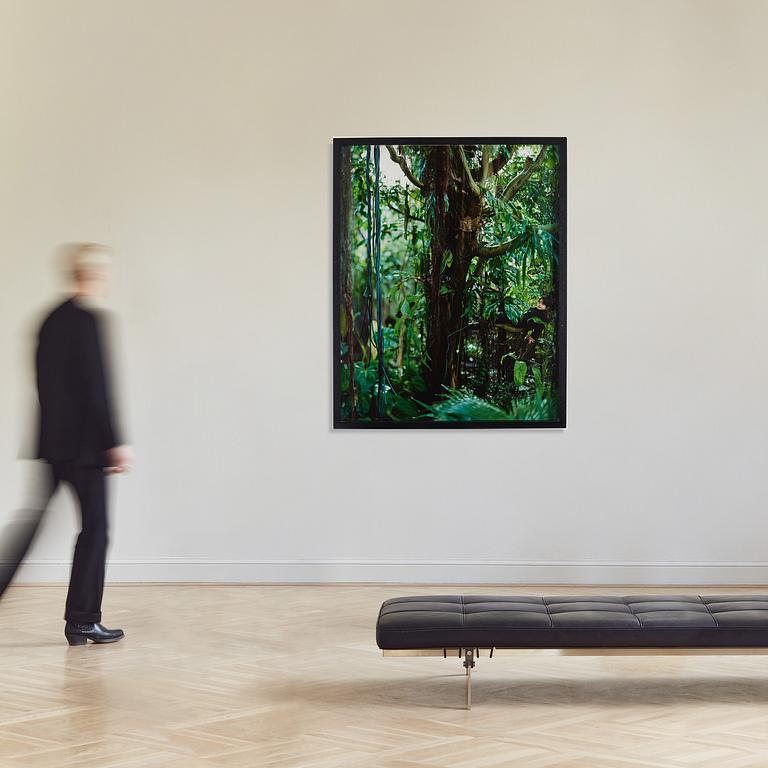Maria Friberg
'Days of Eyes 1', 2014
Signed Maria Friberg and numbered 3/3 verso. Pigment print 188 x 150 cm.
Exhibitions
Varbergs konsthall, 'Under isen ligger himlen', 23 September 2023 - 7 January 2024.
Havremagasinet, Boden, 6 February - 10 April 2016, another example exhibited.
Literature
Maria Friberg e.a, 'Changed Positions', 2015, illustrated on full-page p. 17.
More information
Maria Frieberg is one of our most important contemporary artists, she has worked conceptually with photography and video since the 1990s. Typical of Frieberg's artistic practice is a great interest in society and a strong desire to depict contemporary phenomena. In her staged photographs, she strives for a striking combination of aesthetically pleasing images and the familiar contemporary objects of consumerism. Friberg manages to pinpoint burning contemporary issues without becoming defined as a politically oriented artist. There are of course several reasons for that but some of the strengths she possesses are humor and an unfailing sense for compositions.
In the exhibition catalog for Havremagasinet in Boden, spring of 2016, Dragana Vujanovic describes Friberg's work:
“Unlike the street photographer that
strives to capture decisive moments
of life that takes place in front of the camera,
Maria Friberg’s photographs are a result of a
thorough planning and large productions where
collaborations with inventors, scenographers and
craftsmen are essential in the creation of the work.
References to art history, and especially painting,
are frequent in Friberg’s works.”
In the series “Duration” one can find references to the Danish painter Vilhelm Hammershøi and his interiors, and the draped fabrics in the series “Embedded” would be great in a classical stuff painting.
In the larger work “Days of Eyes 1” from 2014, the paintings of the French naivist Henri Rosseau (1844-1919) comes to mind. Although Rousseau never traveled abroad, his favorite subject was the jungle. In the same way, Frieberg illustrates with her photography how a person of today is connected with the whole world without actually having to leave Sweden. Using the Uppsala botanical garden and a boy from the same town, she conveys how we are all part of the same ecosystem - if the Amazon jungle changes, so does Uppsala.
Just like with Rosseau the green hues of plant life carry mystical aspects. Among the vines and branches in Frieberg’s photographs, we see hanging black cables that remind us of how technology has developed our physical abilities and given us a greater capacity to discover the world. The work opens up for questions; Are we separating ourselves from the natural world in favor of a virtual one? How are different cultures and ecosystems affected by this new availability? What are the consequences, if any?
Artist
Maria Friberg was a Swedish artist who primarily worked with photography and videography. Her primary theme was masculinity, whereby she investigated the traditional male adopted roles and its properties which has through history been defined as "masculine". Since her breakthrough in the 1990s alongside other female photographers who were educated at Gothenburgs photography school, Friberg has offered his growing audience enigmatic, powerful, and imaginative staged images of men. They float tranquilly in pool water, are squeezed into cars, sometimes sleeping among white sheets, or only their lower halves are visible as they sit in suits at a table. She works with staged photography and often uses art historical references. Friberg likes to work in series, varying a motif across multiple works. Some of her most well-known series are "Still Lives" and "Almost There."
Read more


































